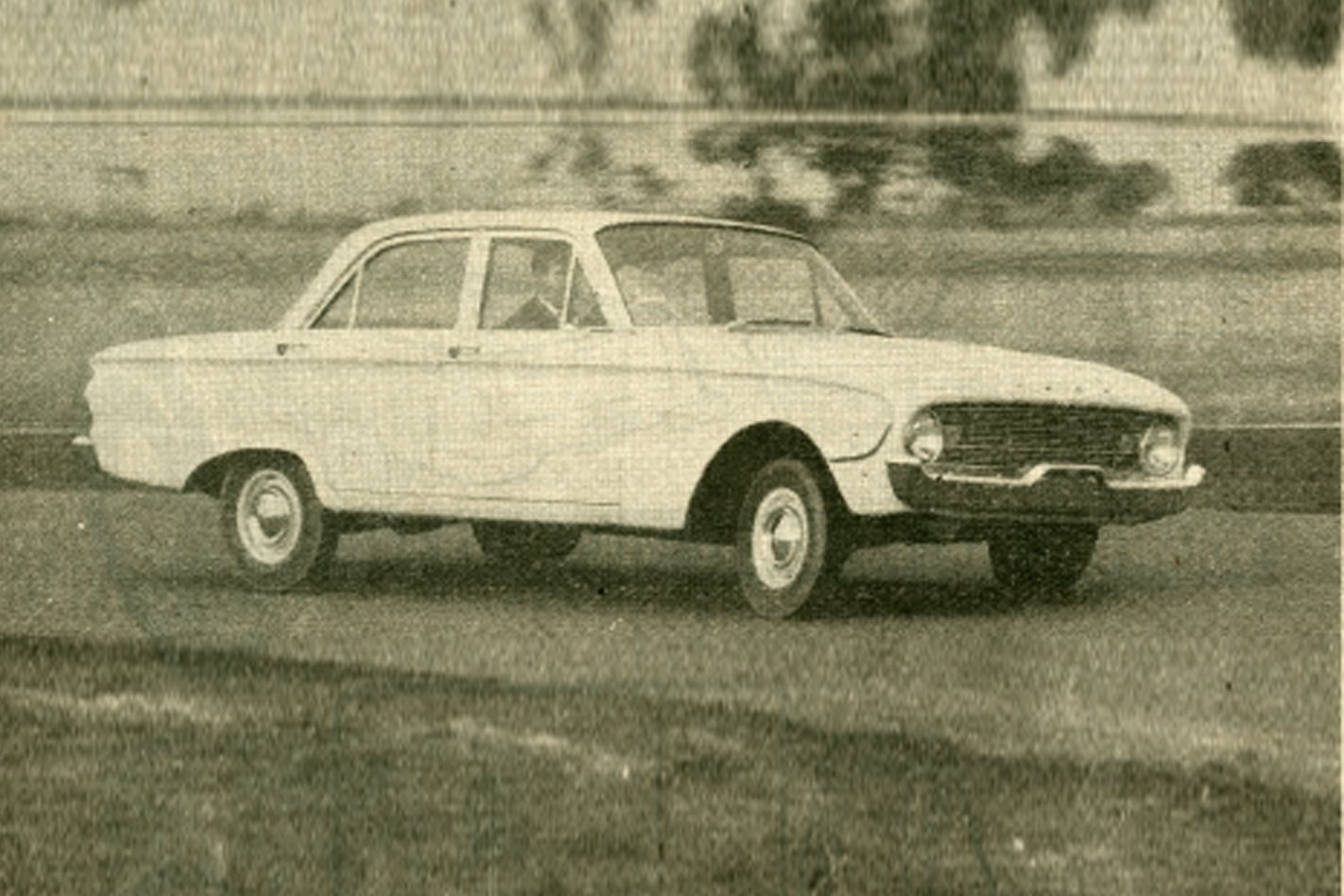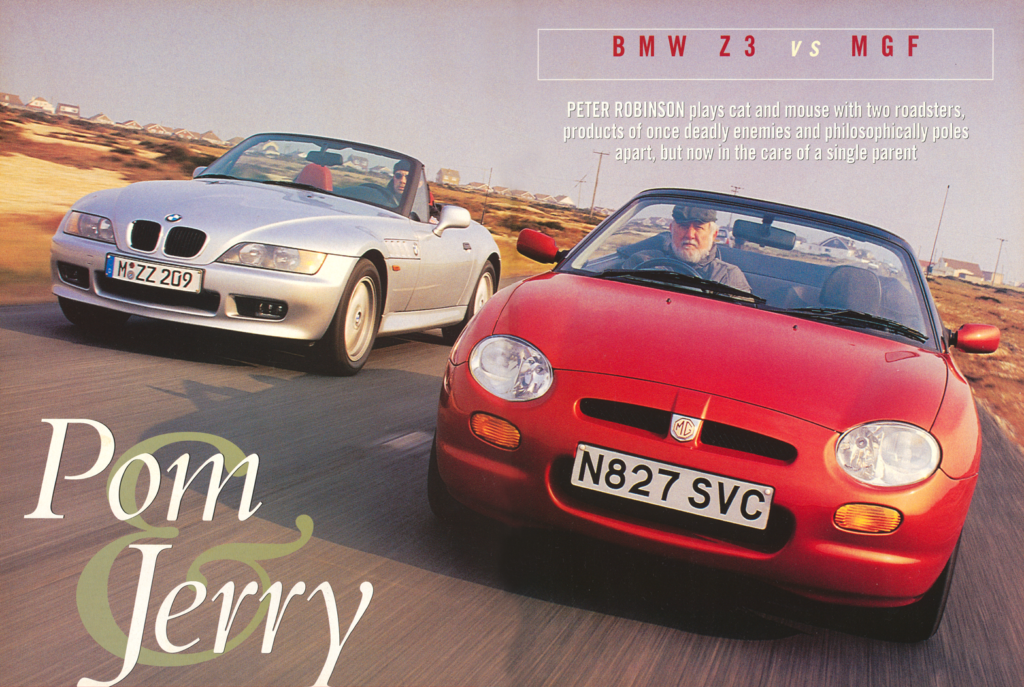THE QUESTION on the minds of practically every Australian motorist this month is – “How good is this Ford Falcon?”
First published in the October 1960 issue of Wheels Magazine, Australia’s most experienced and most trusted car magazine since 1953.
To find out the answer I went to Ford Australia‘s new £11 million Melbourne plant some weeks before the official announcement of the car to test drive the three versions.
Because the cars were new with very few miles, and because they had not been announced officially, I was unable to give the full road test. Instead I had to content myself with driving them around the factory’s test track – short, but reasonably complete.
I must admit that my first thought when I saw the Falcon was – this car is too low and I won’t be able to get my six feet into it with comfort. I therefore approached suspiciously, half expecting to have to bend myself double. The surprise was that I slipped in behind the wheel with the ease of an olive dropping into a martini.
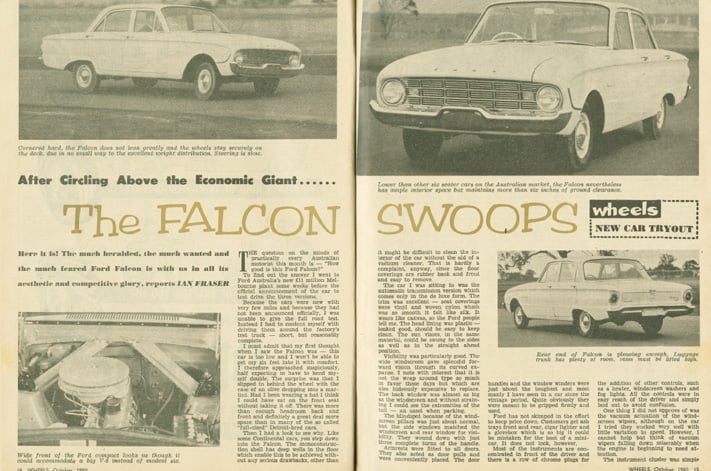
That is hardly a complaint, anyway, since the floor coverings are rubber back and front and easy to remove. The car I was sitting in was the automatic transmission version which comes only in the deluxe form.
The trim was excellent – seat coverings were vinyl and woven nylon which was so smooth it felt like silk. It wears like canvas, so the Ford people tell me. The head lining was plastic – looked good, should be easy to keep clean. The sun visors, in the same material, could be swung to the sides as well as in the straight ahead position. Visibility was particularly good. The wide windscreen gave splendid forward vision through its curved expanse.
I note with interest, that it is not the wrap around type so much in favour these days, but which are also hideously expensive to replace. The back window was almost as big as the windscreen and without straining I could see the extremities of the tail – an asset when parking. The blindspot caused by the windscreen pillars was just about normal, but the side windows matched the windscreen and rear window for visibility.
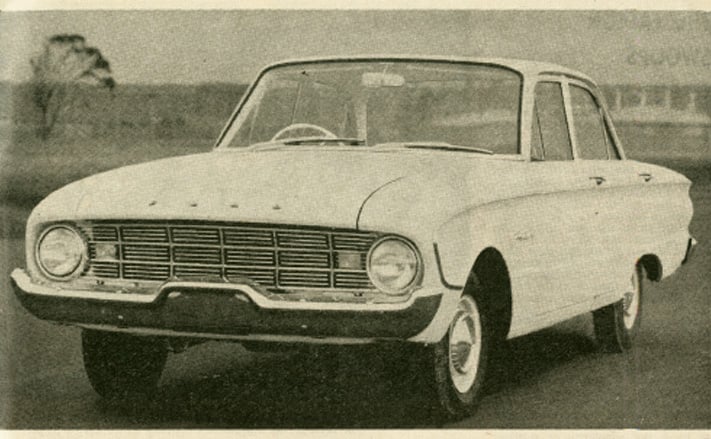
Ford has not skimped in the effort to keep its price down. Customers get ash trays front and rear, cigar lighter, and a glovebox which is so big it could be mistaken for the boot of a minicar. It does not lock, however. Most of the instruments are concentrated in front of the driver and there is a row of chrome plugs for the addition of other controls, such as a heater, windscreen washers, and fog lights.
All the controls were in easy reach of the driver with a simple layout ·to avoid confusion. One thing I did not approve of was the vacuum actuation of the windscreen wipers, although they worked very well on the car I tried with little variation in speed. However, I cannot help but think of vacuum wipers falling down miserably when the engine is beginning to need attention.
The instrument cluster is simple and directly in front of the driver. The speedo was calibrated in at every five mph. In the same housing and at either side of the speedo were gauges for fuel tank contents and water temperature. Actually, these two dials were just about the strangest instruments I have ever seen in a car.
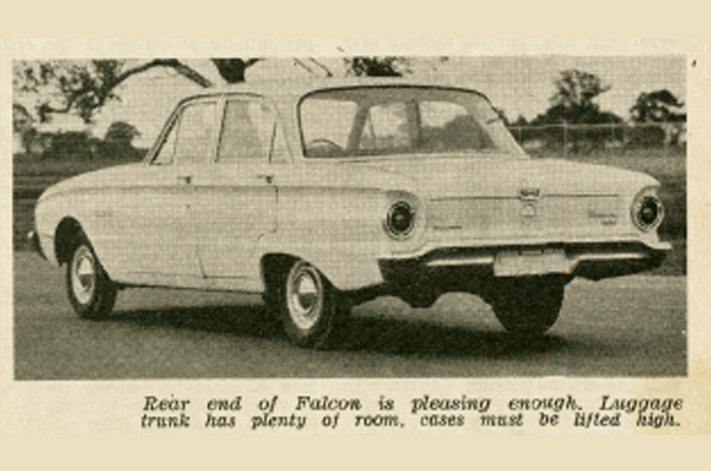
Unlike many of the torque converter transmissions we are used to, the one on the Falcon was silent and incredibly smooth in operation. It had only two speeds, but you have to try very hard to pick exactly where the change occurs. If it stays in adjustment for long periods, then this will be one of the best automatics ever to come to this country. It is obviously the latest style of US auto box and something we are just not used to.
This one, named Fordomatic naturally enough, will do a great deal to boost the popularity of shiftless cars in this country. Although the brake pedal was not as wide as it is on some automatic cars, it was easy to reach with either foot and light enough not to need both together.
The go pedal was a long organ-type which permitted plenty of variation in driving positions without the driver feeling uncomfortable. I liked the feel of the brakes. They were light and felt as though they were really stopping the car. Although its lining area was a little on the small side at 114.3 square inches, I could not detect any signs of fade in the relatively short time I drove the Falcon. However, I feel sure that really hard motoring would probably produce a fair amount of deterioration. They were surprisingly light to operate.
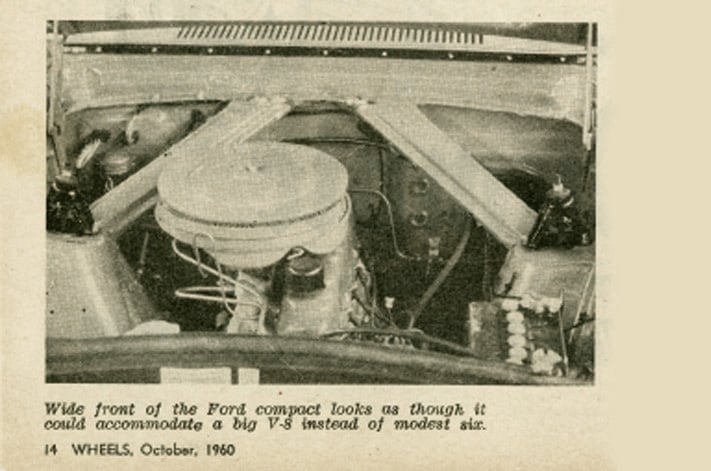
Although far from being uncomfortable, some tall drivers may find that the driving position – even with the seat fully back – is mildly unsatisfactory. Tall people would probably think they are all arms and legs at first. It is probably only a matter of getting used to it. So much for the interior. A key switch starts the engine only if the selector points to neutral. After the engine is running you then move into drive.
The test car I tried was idling too fast and the car had the creeps, so it was necessary to hold it on the brake. Once underway the transmission was excellent, as we said before. Naturally there is a hold for low range to aid braking downhill, etc.
Besides being impressed with the transmission (you will not be able to shut me up about it), the engine itself was delightful. Smooth even in such an early stage in its life, the power unit felt willing and able to rev like mad if need be. The bore is 3.5in and the stroke 2.5in, giving a cubic capacity of 144.3 cu in, or if you like metrics, 2366 cc. With such a short stroke, long engine life seems assured.
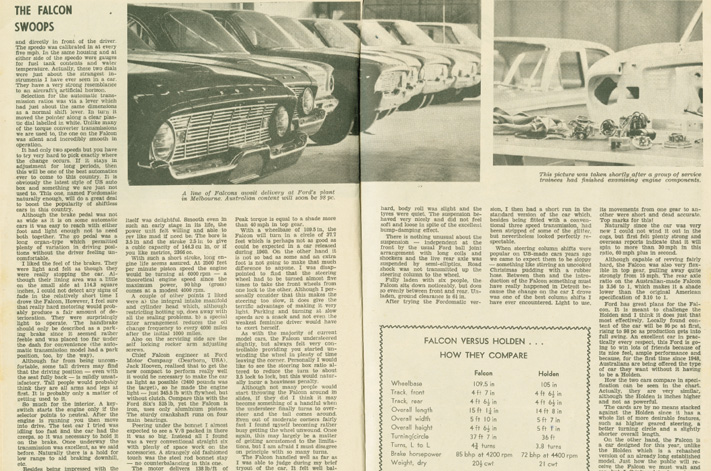
A couple of other points I liked were a) the integral intake manifold and cylinder head which, although restricting hatting up, does away with all the sealing problems.
b) a special filter arrangement reduces the oil change frequency to every 4000 miles, after the initial 1000 miles. Also on the servicing side are the self-locking rocker arm adjusting screws. Chief Falcon engineer at Ford Motor Company (Dearborn, USA), Jack Hooven, realised that to get the new compact to perform really well it would be necessary to make the car as light as possible (2400 pounds was the target), so he made the engine light – just 345.5lbs with the flywheel, but without the clutch.
Compare this with the Ford Six’s 525lbs, yet the Falcon’s is iron, using only aluminium pistons. The sturdy crankshaft runs on four main bearings. Peering under its big bonnet I almost expected to see a V8 packed in there. Instead, all I found was a very conventional straight six with plenty of space work on the accessories. A strangely old fashioned touch was the steel rod bonnet stay – no counterbalancing in this one. The motor delivers 138lb/ft of torque at 2000 rpm which gives the engine a nice range of flexibility. Peak torque is equal to a shade more than 40 mph in top gear. With a wheelbase of 109.5 in, the Falcon will turn in a circle of 37.7 feet which is perhaps not as good as could be expected in a car released during the 1960s.
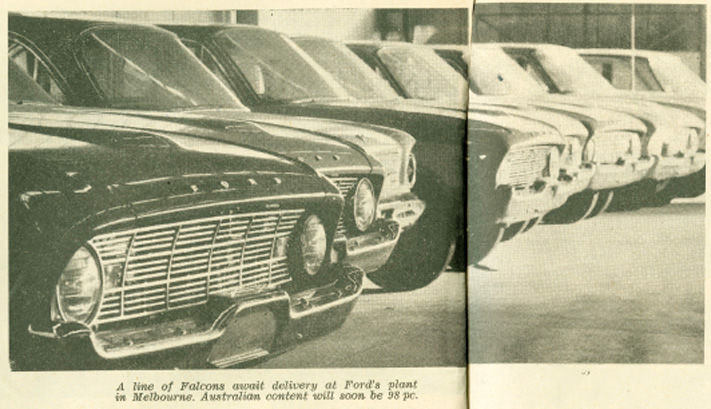
Personally, I would like to see the steering box ratio altered to reduce the tum to about 3.5 lock-to-lock, but this would naturally incur a heaviness penalty. Although not many people would start throwing the Falcon around in slides, if they did I think it may become something of a handful when the understeer finally turns to oversteer and the tail comes around. Even coming out of moderate corners fairly fast I found myself becoming rather busy getting the wheel unwound. Once again, this may largely be a matter of getting accustomed to the limitations, but I am afraid I must disagree on principle with so many turns. The Falcon handled well as far as I was able to judge during my brief tryout of the car.
It felt well balanced – and was – with 52/48 front and rear weight distribution. When cornered hard, body roll was slight and the tyres were quiet. The suspension behaved very nicely and did not feel soft and loose in spite of the excellent bump-damping effect. There is nothing unusual about the suspension – independent at the front by the usual Ford ball joint arrangement with long coils and shockers, and the live rear axle was suspended by semi-elliptics. Road shock was not transmitted up the steering column to the wheel. Fully laden with six people, the Falcon sits down noticeably, but does so evenly between front and rear. Unladen, its ground clearance is 6 inches.
After trying the Fordomatic version, I then had a short run in the standard version of the car which, besides being fitted with a conventional three-speed transmission, had been stripped of some of the glitter, but looked perfectly respectable nevertheless. When steering column shifts were made popular on US-made cars years ago we came to expect them to be sloppy – like stirring an uncooked Christmas pudding with a rubber hose.

Naturally, since the car was very new, I could not wind it out in the cogs, but first felt plenty strong and overseas reports indicate that it will spin to more than 30 mph in this ratio, 60 mph plus in second.
Although capable of revving fairly hard, the Falcon was also very flexible in top gear, pulling away quite strongly from 15 mph. The rear axle ratio on the Australian-made Falcon is 3.56 to 1, which makes it a shade lower than the original American specification of 3.10 to 1.
Ford has great plans for the Falcon. It is meant to challenge the Holden and I think it does just that most effectively. Locally found content of the car will be 95 % at first, rising to 98 % as production gets into full swing.
An excellent car in practically every respect, this Ford is going to win lots of friends because of its nice feel, ample performance, and because, for the first time since 1948, Australians are being offered the type of car they want without it having to be a Holden.
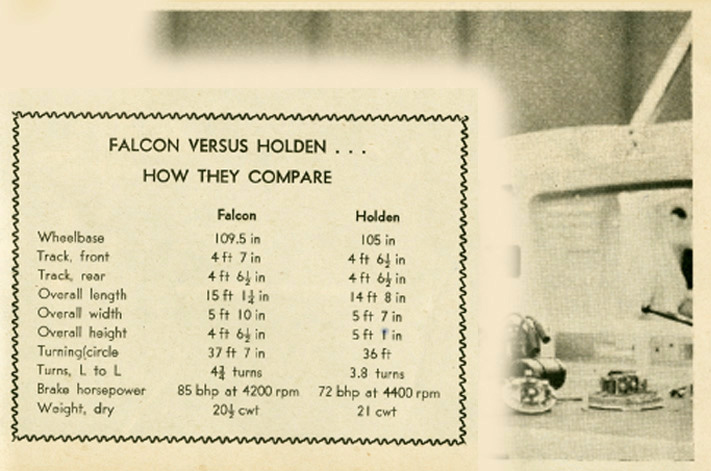
The cards are by no means stacked against the Holden since it has a whole list of more desirable features, such as higher geared steering a better turning circle and a slightly shorter overall length.
On the other hand, the Falcon is a car designed for this year, unlike the Holden which is a rehashed version of an already long established model. Just how the public will receive the Falcon we must wait and see, but I think a lot of people are going to be happy.

